Perennial garden flowers: growing and decorating a flower garden
Despite all the variety of annual flowers, many gardeners prefer to decorate the ground. perennials: they are more unpretentious to care for, they do not need to be planted every year, and a large selection will allow you to create any flower beds that will become an excellent garden decoration. Perennial garden flowers only require regular glaze and basic care, while they will delight the gardener with a magnificent flowering all summer, if you choose the right planting and growing conditions for them.
Content:
- Features of growing perennials
- Tall perennials
- Medium-sized perennials
- Stunted perennials
- How to decorate a flower garden beautifully
Features of growing perennials
Perennials are herbaceous plants that can grow for several years in one place without transplants... In the winter, their aboveground part dies off, but the roots remain in the ground and give new shoots in the spring. Most perennials are frost-resistant and calmly tolerate the conditions of the middle zone without additional protection from the cold. If you choose the right perennials for mixed flower beds, they will bloom throughout the summer, and the site will constantly be beautiful.
Some perennials such as primroses, lungwort or bulbous plants capable of blooming from the end of April.
Bloom chrysanthemums and phlox ends in mid-September before the first frosts - throughout the warm season, your site will be decorated with magnificent flowers of all possible shades. Many of them can be used as cut crops: for example, placed in water peonies able to maintain freshness and beauty for 20 days - this is an excellent decoration for the home.
Many perennials survive the cold season by preserving the supply of nutrients in bulbs, tubers or powerful rhizomes, including gladioli, calla lilies, tulips and many other plants. They are the most demanding to care for: in some cases, you will have to dig up the bulbs every year and store them in special conditions to ensure lush bloom the next year. Perennials are usually divided into tall, medium-sized and undersized: when combining them, you can build interesting flower beds and mixborders, while the plants will not interfere with each other. Let's take a closer look at each of these varieties.
Tall perennials
Tall perennial flowers can be used in the garden as an independent decoration, they can also be planted along the wall or made part of a colorful mixborder.
There are several of the brightest and most spectacular perennials:
- Stock-rose (another name is mallow). This is a modest and at the same time very beautiful and bright flower, the height of the plant stem can reach from 1 to 3 meters. The diameter of the funnel-shaped flowers is up to 15 cm, such a plant will be noticeable from afar. The color of the buds can range from red and dark pink to pale white. At the same time, mallows are drought-resistant, they are not afraid even of severe cold weather and can bloom all summer.This is ideal for a separate planting away from the rest of the flower beds. Stock roses are usually grown within two years: from the third year of life, the plant begins to bloom much worse.
- Spotted sapwood is a beautiful plant with stems up to one and a half meters high. It attracts gardeners with its unusual flowering: on the stems in July, lush purple inflorescences bloom, brushes, over time they gradually change color. The sapwood can be planted in the center of the flower bed, surrounded by medium-sized and low-growing perennials.
- Sunflower willow - an interesting decoration for the garden. It has large saucer flowers with bright yellow petals, the sunflower looks great in any area. Its height can reach 2 meters or more.
- Golden balls (rudbeckia) - a good decoration for the fence. The tall, dark green stems have bright yellow or purple double flowers that can stand for more than a week after cutting. Rudbeckia very unpretentious in care, it grows quickly on wet soils. If you thin it out and remove the faded buds, the flowering will become even more lush and beautiful.
These are just some of the tall perennials that you can choose to decorate your garden. Growing perennials will not be difficult, they are not afraid even of the harsh winter cold. High growth of stems and bright buds make them especially noticeable, it is worth using when creating a unique landscape design.
Medium-sized perennials
Medium-sized flowers include flowers whose stems do not exceed 80 cm in height. A wide variety of varieties and color shades allows you to combine them in lush flower beds and flower beds, however, growing medium-sized perennials requires taking into account the special requirements of each plant.
The most common among them are:
- Day-lily (red-nosed). It is called the flower of a lazy gardener: old varieties are very undemanding to care for. New hybrids are more capricious, but everyone will like them with a huge variety of shades: the buds can be lemon yellow, orange, red, two-color, etc. Daylily is best planted in a well-lit place, it blooms especially well on loamy soils with good drainage.
- Another good option for a flower bed is yarrow... It can be not only white, there are dozens of varieties with red flowers of several shades. Yarrow blooms almost all summer: flowering begins in June and lasts almost until mid-September.
- One of the most common flowers in the middle strip - pion... Large double buds look great, moreover, they belong to late flowering plants and will decorate the garden in early autumn, when most of the flower beds are already empty.
- Phlox paniculata - a plant with bunches of fragrant bright flowers, herbaceous stems can reach 80 cm in height. Growth depends on light: in partial shade, the stems grow more slowly, and the flowering will be less abundant. Garden phlox can have a wide variety of shades of buds: they are white, pink, red, etc.
Medium-sized perennials should not interfere with each other, and care must be taken that the flowerbed is not crowded. The lack of light and air impairs flowering, therefore, the inhabitants of the flower bed should not be allowed to grow too quickly. When creating mixborders, tall perennials are planted in the center, they are surrounded by medium-sized plants, and undersized plants are planted around the edges - with this arrangement, everyone will have enough light.
Stunted perennials
Growing low-growing perennials in the garden has its advantages: although their height does not exceed 30 cm, they look just great, many flowers have become a must-have decoration for Russian gardens in the middle lane.
There are several of the most popular and common plants:
- Irises - perennial plants of the rhizome type with dense green leaves and delicate large buds. Irises can bloom not only in spring and summer, but also in early fall, some varieties bloom twice a year. Iris - a rather capricious plant: it does not like too hot sunlight, excess moisture, the soil must be well-drained. These flowers take root well in new areas, you can choose varieties with the most interesting bud colors.
- Pansies are a familiar rustic flower that attracts attention from afar. The buds can have a wide variety of color combinations, from deep yellow to almost black. The stem height does not exceed 30 cm, most often they are grown not as perennials, but as biennial plants. Pansies are afraid of severe cold, for the winter it is recommended to cover the roots from the cold. They are also afraid of excess moisture: it is important to take care of the drainage layer when planting.
- Dwarf phlox. This variety phlox spreads on the ground and quickly creates a solid green bedspread with bright colors of a wide variety of colors on the flower bed. Phloxes can be white, pink, deep purple, etc.
As low-growing perennials, you can also plant herb carnation, sage, large-flowered flax, etc. Such plants create an excellent background for taller plants and help to achieve a harmonious flower bed design.
How to decorate a flower garden beautifully
So that the flowerbed does not lose its pleasant appearance, it is necessary to periodically replace faded plants or give preference to those who will bloom for several months. The earliest are bulbous plants: several varieties can be planted in one flower bed. tulips or daffodils... At the end of spring, irises will bloom: you can arrange irises of various shades in several rows.
For curbs, the ideal solution is primroses, they can be combined with hyacinths to create a contrasting color combination.
Phlox looks good next to roses, next to rose bushes can be planted lavender... These are just some of the options for decorating flower beds with several types of flowers: if you do not forget about watering and follow simple recommendations, perennials will make your garden truly wonderful.
More information can be found in the video.



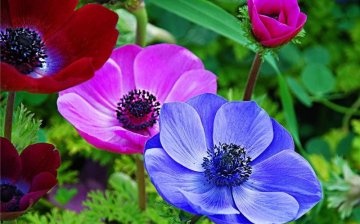
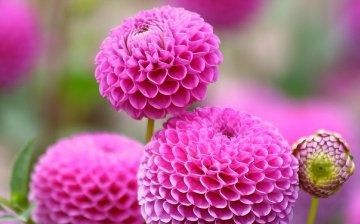
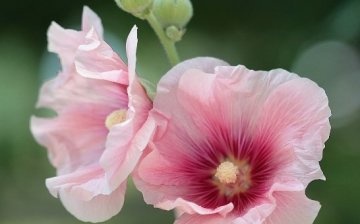
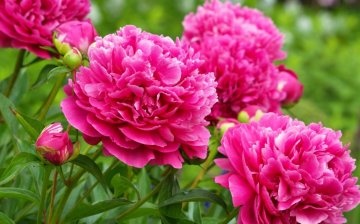
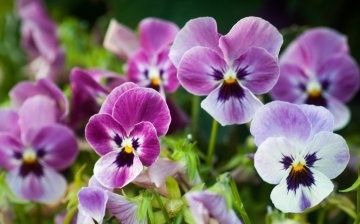
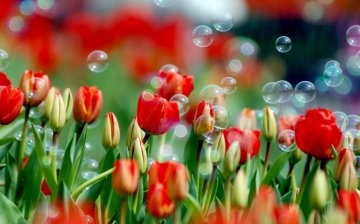






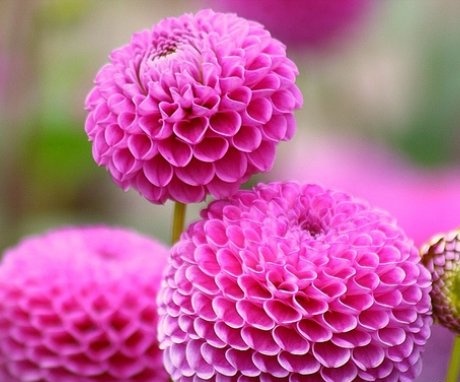
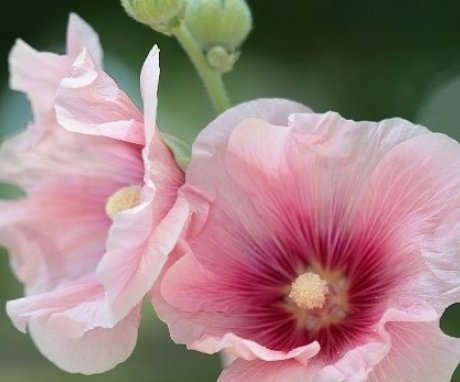

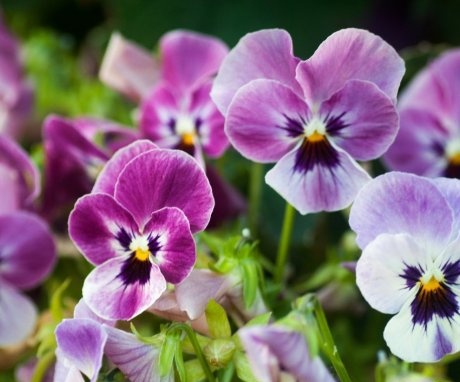

Hello! Can you please tell me if someone knows whether snapdragon or antirrinum is a perennial plant? I always thought it was an annual. How, then, to take care of him? Just cut it off for the winter?